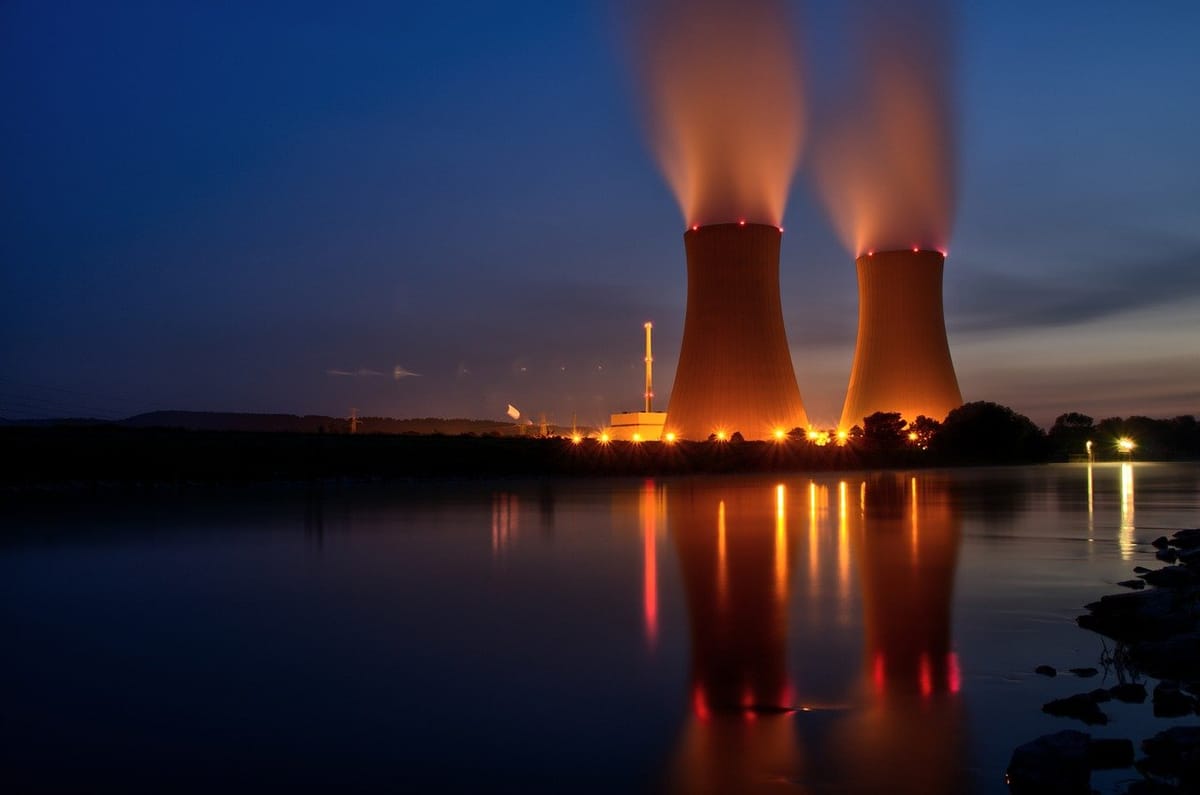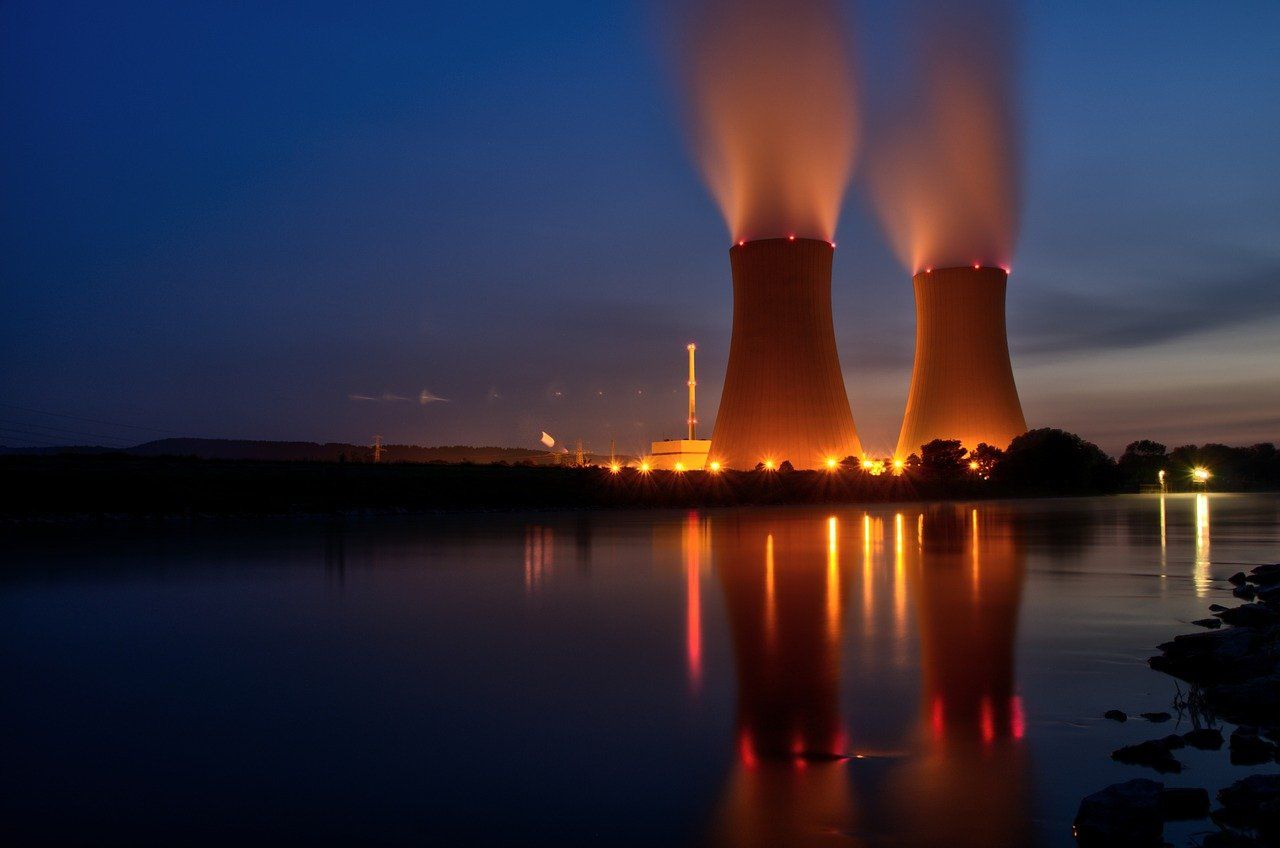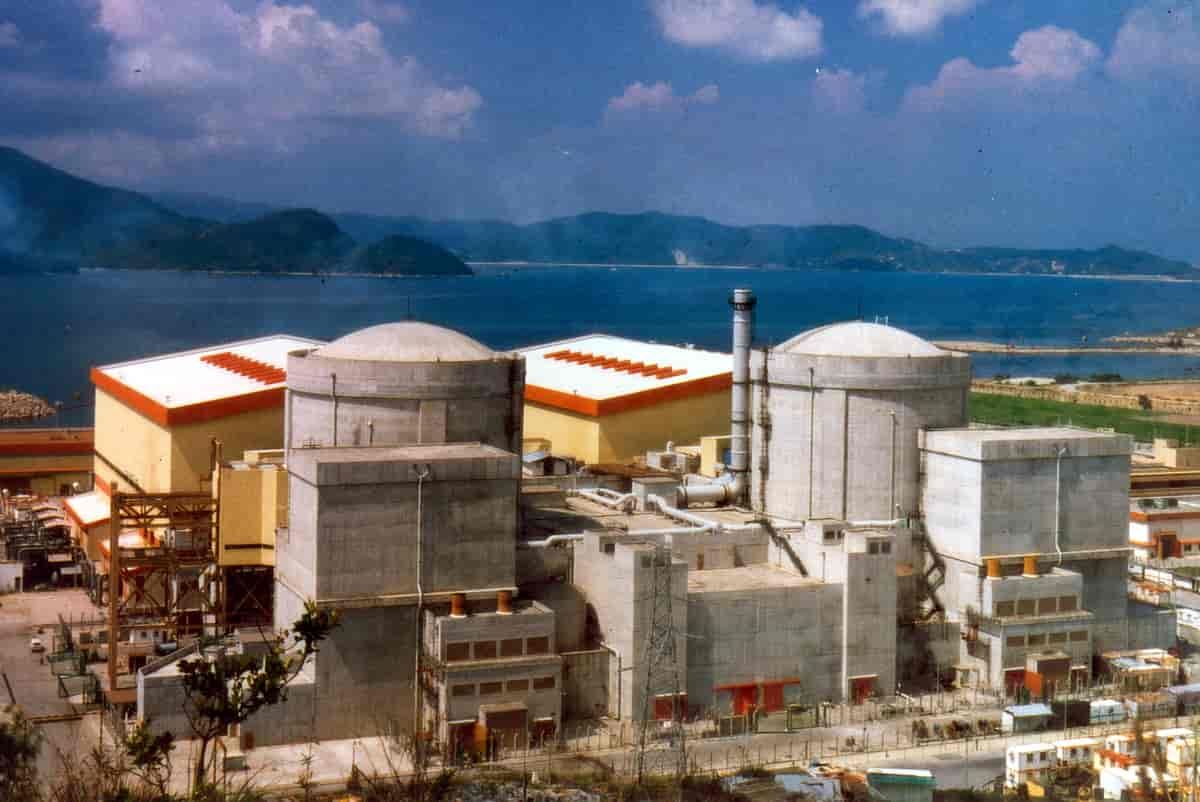Nuclear Power Really Is the Future
Contributing Writer Diego Rao ’23 responds to Columnist Cole Graber-Mitchell's ’22 previously published article decrying nuclear power, arguing that it is necessary for a sustainable future.


In its previous issue, The Student published an article titled “Nuclear Power Isn’t the Future.” The piece’s author, Cole Graber-Mitchell ’22, voiced fears about poisoned air and water, dirty bombs, and persistent environmental racism, arguing that these risks outweigh the benefits of nuclear power in pursuit of a sustainable future. Yet nuclear power in fact offers greater relief from these threats than any alternative available.
The climate crisis is forcing a global reckoning with how we source the energy that drives our lives and economies. Fossil fuels such as coal, oil, and natural gas must be phased out as quickly as possible if we are to avert disasters worse than those that have already struck.
Renewable sources like solar, wind, and hydroelectric power are zero-emission, but they meet only a small fraction of our energy needs; collectively, these sources provided just 7 percent of total U.S. energy consumed in 2020. Nuclear power, despite being vastly more burdened by regulation and stigma, already tops that figure at 9 percent. Simply building more solar plants and wind farms won’t cut it, in part because these energy harvesting methods are so land-intensive that they have harmful environmental impacts of their own. In addition, solar power, even with government subsidies, is still more expensive per unit of energy than nuclear power.
Graber-Mitchell suggests that we close the gap between our energy demands and renewables’ capacity by reducing how much energy we use, but cutting our consumption by any significant measure is not a realistic option. Indeed, some of the crises sparked by climate change will require still more energy to address. Droughts resulting from disturbed weather patterns will need to be answered with desalination, an energy-intensive process that turns salty seawater into fresh water that people can farm with, clean with, or simply drink. Direct carbon capture can neutralize some of the greenhouse gasses that drive the process of global warming, but this technology, too, requires vast amounts of electricity. Nuclear power offers abundant, cheap, and clean energy to meet these demands.
One of the most appealing aspects of fossil fuel-based energy is the capacity to scale production up or down depending on demand, which varies constantly according to shifting circumstances. More lightbulbs are on at night than in daytime, for example, and it takes more energy to heat a building in the middle of winter than in more temperate months. This capability, known as load following, is simply impossible for solar and wind power generation; no amount of engineering will ever allow us to control whether the sun is shining or the wind is blowing. Energy storage systems can buffer some of this gap, but most storage technology uses lithium-ion batteries, which require minerals whose extraction is so brutal on the laborers and environments involved that these substances have been compared to blood diamonds. Nuclear power plants built according to modern designs, on the other hand, have load-following capabilities that are competitive with the dirty generation systems that dominate the market today.
The safety of nuclear power plants is validly one of Graber-Mitchell’s core concerns. But modern designs disprove his claim that “it is pure hubris to think that technology can save us from the danger posed by nuclear fission.” Older reactors relied on human and mechanical responses to operating conditions — both potential points of failure. Newer configurations, however, like the class of power plants known as pebble-bed reactors, leverage fundamental principles of physics to guarantee their safety. The laws of nature make it literally impossible for these sorts of plants to melt down; nothing — not human error, not natural disasters, not terrorists or foreign militaries — can turn a plant like this into Chernobyl or Fukushima.
Nuclear power is based on the fissile decay of radioactive isotopes like uranium; the core, or nucleus, of an atom splits apart, releasing energy (in the form of heat, which gets converted into electricity) and free neutrons, many of which strike other nuclei, splitting them apart and propagating a chain reaction. Keep this reaction under control, and you have a stable nuclear power source; allow the chain reaction to grow exponentially, however, and you end up with a meltdown.
The reactors of previous generations depend on complex water-based cooling elements to keep this chain reaction in check; if the cooling system fails, heat and pressure build up until a dangerous explosion occurs. In pebble-bed designs, however, increased temperature actually slows the rate of fissile reactions. Rather than exponential growth, fission in pebble-bed reactors creates a self-regulating negative feedback loop, with the result that the reactor defaults to a safe, stable equilibrium. It does not depend on humans, machines, legal regulations, luck, or any other outside intervention; it is as fundamental, as inescapable, and as reliable as gravity.
The water cooling system of old reactor designs, which Graber-Mitchell cites as a security vulnerability, is entirely absent from pebble-bed reactors, which are cooled by nonreactive gasses like helium; unlike water, these inert coolants do not absorb contaminants that would be harmful if leaked into groundwater or the atmosphere. You could fill a birthday balloon with the helium used in a pebble-bed reactor.
Many of the fears surrounding nuclear power stem from the field’s lexicon of scary-sounding terms like “beta rays” and ignorance of what they really mean. Each of us absorbs small amounts of radiation — beta rays, gamma rays, up and down the Greek alphabet — every single day living on this planet. Radioactive minerals are just rocks; they’re in the ground all around us, so ambient radiation is simply a fact of life. Concern over exposure to radiation as a result of either accidents or intentional misuse of reactor products is unfounded when considered in this context, because we have the biological capacity to absorb such small doses of radiation with complete safety.
Accidental radiation leakage from fuel sources, whether at the plant itself or in transport, storage, or disposal, is a trivial concern. Pebble-bed reactors consume fuel pellets roughly the size of tennis balls (the “pebbles” in question). Because each pellet contains such a small amount of uranium — in contrast with the large fuel rods of old designs, which are so radioactive that they need to be individually encased in concrete and lead — the danger is literally compartmentalized into miniscule quantities; even if a proportionally large number of pellets were damaged in, say, a shipping accident, the total amount of radiation released would pale in comparison to the natural level of ambient radiation.
So-called “dirty bombs,” to which Graber-Mitchell alludes, are another paper tiger. The concern is that by combining conventional explosives like dynamite with radioactive material like spent reactor fuel, a malicious actor could disperse radiation over a wide area, subjecting a large population to health risks. But the comparatively small amount of fuel such an actor could realistically get their hands on and the relatively low radioactivity of spent fuel means that this type of weapon is self-defeating. If it disperses radioactive material over a very large area, the radiation in any one place is low enough to fade into the background; if it keeps the material more concentrated, fewer people are exposed and the affected area is much more easily decontaminated. In fact, the radiation is most harmful when still fully concentrated before detonation, meaning the people most at risk are actually the attackers assembling and transporting the bomb.
Graber-Mitchell also raises issues of environmental justice. For instance, he points out that power plants of any variety are likely to be in or near city centers, placing low-income individuals and people of color at disproportionate risk for potential health complications caused by this proximity. To be sure, energy policy and practice are plagued by the same intractable racial and class biases that permeate the rest of American society, with the result that fossil fuels’ harmful effects impose the greatest burdens on those among us already suffering the most. This must change. But the sprawling real estate requirements of solar and wind energy make them impossible to utilize at the necessary scales in urban environments. The remaining options, then, are two: either we maintain the status quo wherein fossil fuel plants continue to spew poison into the air around our most vulnerable communities; or we can adopt zero-emission, reliably safe nuclear power that will meet these communities’ energy needs without exposing them to carcinogens and other toxins. Rather than perpetuating environmental racism, a widespread transition to nuclear power would be a huge leap forward in pursuit of the fundamental human right of clean air for all.
China brought the first advanced pebble-bed reactor online late last year, and some 20 others like it are in development around the world, according to the International Atomic Energy Agency. But the US is lagging, in large part because existing regulations are still tailored to old, water-cooled reactors, creating unnecessary legal obstacles that deter investment and stifle innovation in pebble-bed reactors and other advanced nuclear systems. The Nuclear Regulatory Commission says it’s currently on track to establish a modern, “technology-inclusive regulatory framework” only by the end of 2027, far too late to enable us to meet the Paris Climate Agreement’s goal of a 50 percent emission reduction by 2030. The federal government must accelerate this regulatory overhaul to facilitate private investment, and can make its own proactive contribution by passing the Build Back Better bill, which contains hundreds of millions of dollars for advanced fuel production and assistance for communities transitioning away from fossil fuel energy; it’s no coincidence that the main obstruction to this bill’s passage is Senator Joe Manchin, who is neck-deep in fossil fuel money.

Finding solutions to the climate crisis will require vigorous debate grounded in both meticulous scientific research and a commitment to social justice. Graber-Mitchell’s piece is a valuable contribution to this discussion, and I submit the ideas above as a response to his arguments, not as a dismissal of them. Rather than fearmongering and hyperbole, we need a commitment from activists, energy companies, and politicians to bring clean nuclear power to the forefront of our energy strategy. We need to update regulations to address the new elements of safe reactor designs, accelerate development with both private and public investment, and clear the stigma and fear away from one of our greatest assets in the fight against climate change. Nuclear power can and should become the cornerstone for a revolutionary leap forward in our efforts for a sustainable, equitable future.



Comments ()